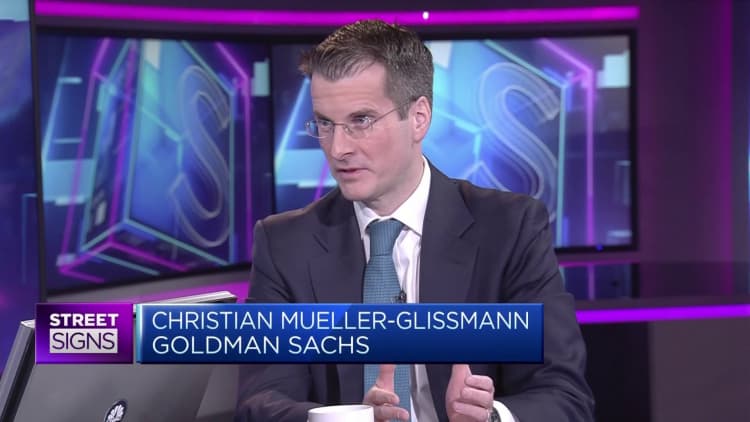

Goldman Sachs Stubbornly high U.S. inflation is still expected to ease in coming months, although investors have sharply scaled back bets on a rate cut by the Federal Reserve after another report showed consumer prices remain sticky.
Data released on Wednesday showed that the consumer price index grew faster than expected in March. Department of Labor Bureau of Labor Statistics.
CPI, a broad measure of the cost of goods and services across the economy, rose 0.4% this month, bringing the 12-month inflation rate to 3.5%. This is an acceleration from the 3.2% rate hike in February.
The report shook investor confidence in the prospect of a rate cut by the Federal Reserve, causing financial markets to retreat and sending U.S. Treasury yields soaring.
current trader Anticipate The Federal Reserve had expected to begin easing policy months before its June meeting, and cut interest rates for the first time in September.
Goldman Sachs believes that the U.S. CPI will fall back to 2.4% this year, lower than the current annualized rate of 3.5%.
“The problem is that there are parts of the inflation that are continuing to push inflation higher,” Christian Mueller-Glissmann, head of asset allocation research at Goldman Sachs, told CNBC’s “Signpost Europe” on Thursday.
“In the last report, it was transportation. Obviously, oil prices are rising at the moment, which is certainly a little stronger than we originally expected,” Mueller-Glissmann said.
He added that the impact of rising oil prices on inflation may be limited as the bank expects OPEC to eventually release spare capacity.
A gas station displays the price of gasoline on March 12, 2024 in Chicago, Illinois.
Scott Olson | Getty Images
Mueller-Glissmann said normalization of wage inflation is one of the core reasons why Goldman Sachs expects U.S. inflation to fall. At this point, he acknowledged that there are “more question marks” in the United States than in Europe when it comes to wage normalization.
“But we still think that many high-frequency job opening indicators, such as in the United States, are declining. So the labor market is still cooling, so people hope that this will bring some relief to wage inflation.”
“Flirting with reflation”
Last month, the Federal Reserve kept interest rates unchanged for the fifth consecutive time, as expected, and kept its benchmark overnight borrowing rate in a range of 5.25%-5.5%. At that time, the Federal Reserve also stated that it still expected to cut interest rates by three percentage points before the end of the year.
March CPI report shows It heightened concerns about inflation exceeding previously expected and appeared to reiterate the cautious approach some Fed policymakers have taken in recent weeks.
Federal Reserve Board Governor Christopher Waller said in a speech late last month, “Not urgent” Lower the Fed’s policy rate to normalize policy.
Separately, Atlanta Fed President Raphael Bostic said he now expects just one quarter-percentage rate cut this year, down from two cuts he had previously expected.
“We went from Goldilocks optimism in the fourth quarter to reflation since the beginning of the year, and I think so far so good. I think the market has handled the shift very well with lower inflation and sharply higher interest rates. To So far, inflation has actually remained sticky and interest rate cuts have been delayed,” Mueller-Glissmann said.
Müller-Glissmann said the key reason for this was “obviously growth”.
“I think this reflation is not just about inflation, it’s about growth, and growth is actually very good. I’m talking about the corporate sector, especially in the U.S., where earnings have been growing.” OK, there’s already Manufacturing and consumers are starting to recover,” he added.
“If we can continue to have good growth, that’s really important.”
—CNBC’s Jeff Cox contributed to this report.





